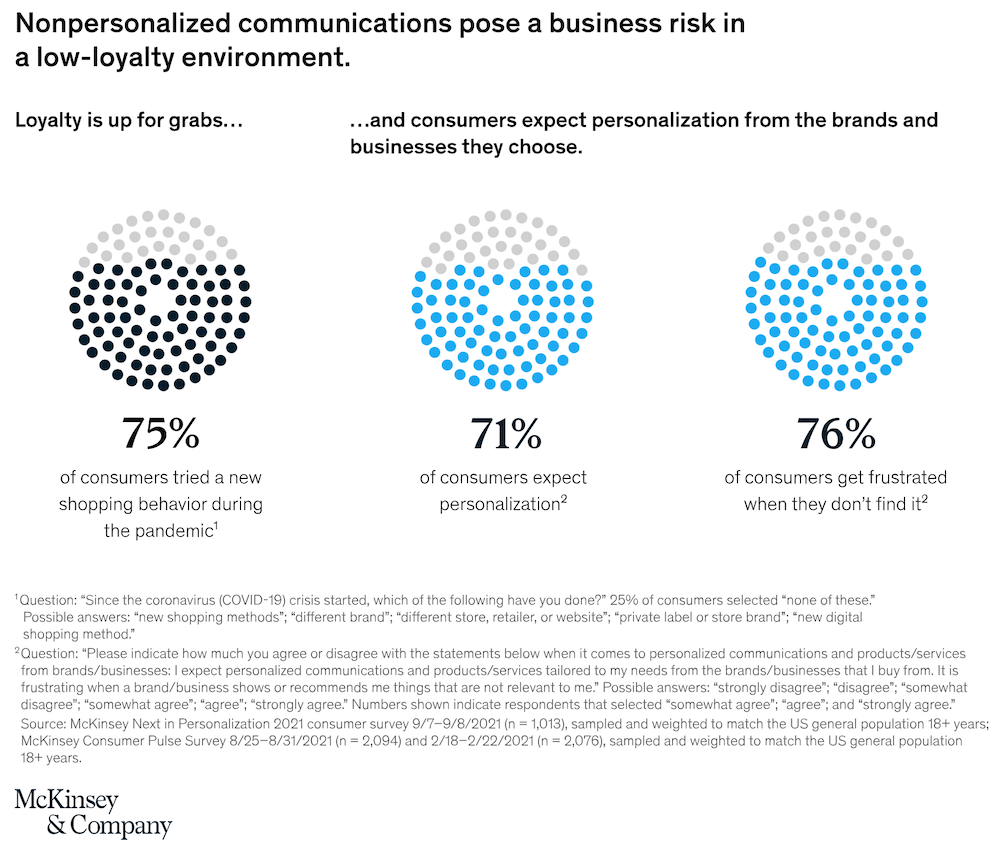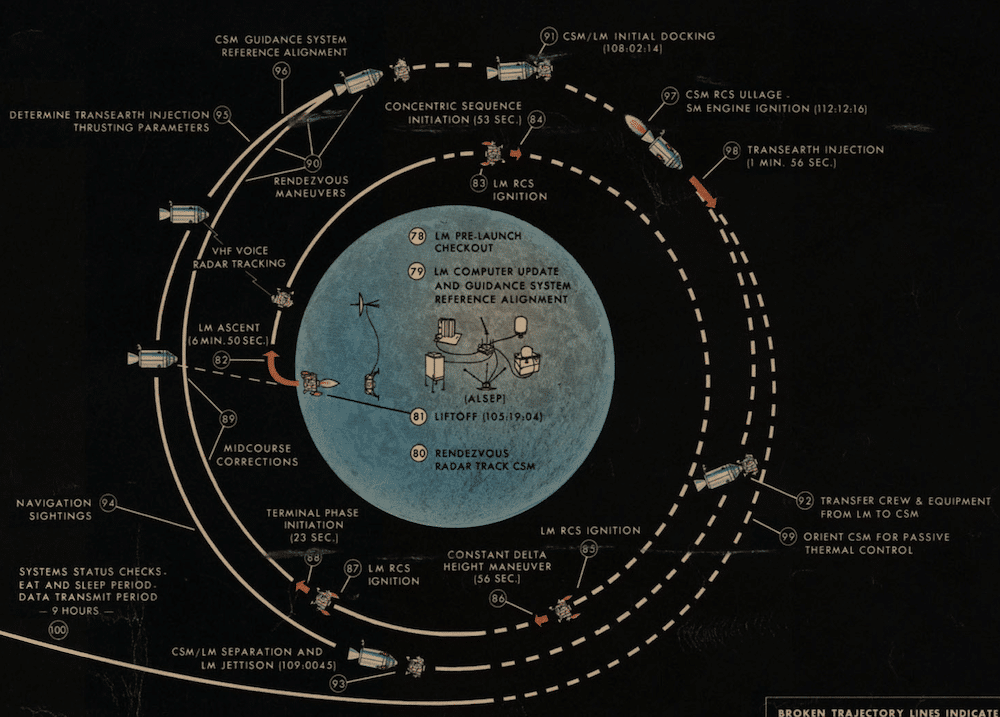If you consider the maths that went into the first moon landing, building a nuclear reactor or the Hadron Collider, naturally you’d be thinking to yourself surely the technical advancement of email marketing must have pushed on further than segmentation, even with hyper-personalisation.
Of course, it has, but so many people now have a finger in the pie, they each want their pound of flesh. Consequently, subterfuge and obfuscation are the order of the day. If you had a multi-million-pound investment in email marketing software, would you want anyone to know that someone else has come along with a solution which outperformed it so well, that it could take all your customers away?
There will always be a place for independent elements, after all technically advanced solutions rarely pander to the whim of the individual user. So to explain what is viable, as opposed to what you can do, this article is offered to make those distinctions, and ultimately help you choose which aspects you’d like in your mix.
The seven elements of email marketing
- Email service providers
- Predictive Analytics
- Segmentation
- Data Capture and Management
- Legal Compliance
- Templates and Design
- Personalisation
Email Service Providers. There are some exceptional and technically brilliant email service providers ESPs, and we rank some of our closest partners among them. If you’re a substantial enterprise with several hundred staff employed exclusively on a particular brand or campaign, then you need the flexibility to be able to extract just the data that enables you to offer what you want. The distinction, of course, is that it is often what you want to sell, rather than what the consumer wants to buy, with its inherent huge RoR. The alternate argument is that the data suggests they might want to buy it, but for being shown, alas that’s where conjecture prevails.
Predictive Analytics enables the astute marketer to best calculate, from all the KPIs, what elements best refine the target audience for each campaign, or brand at a specific time. Again taken as an individual element, this is phenomenally advanced if you consider where we were just a couple of years ago. It can even identify what the individual consumer’s preferences are, so they can be selected for inclusion.
Segmentation. This is our least favourite element here, as it kicks sand in the face of those of us who love personalisation, but merits a place, as many customers can be reasonably accurately targeted, collectively, making a particular email send viable for the ecommerce retailer. But segmentation is not personalisation, which should be stressed.
Data Capture and Management. Data capture is the process of collecting information from a document and converting it into data so it can be best used in your campaign. It is one of the most essential phases of digitisation, and if done correctly, it will allow ecommerce marketers to capture, store, organise, search, and retrieve appropriate data in record time.
Legal Compliance. The new data protection law in the UK, GDPR in the EU and CCPA in the US are the benchmarks for ensuring the consumer’s rights against unscrupulous marketing activity. Of course, to the uninitiated, it can look like a minefield, and yet a few subtle and timely measures can keep you on the right side of the law. These include ensuring you have the consumer’s agreement of your terms and conditions, and proof of the same so that if further down the road someone kicks off, you’re back is covered.
Templates and Design. Much has been written over as many years as email marketing has been around to demonstrate the capability of a good design over mediocre ones. We don’t hope to compete with their advice, but suffice to say that there is a point where all the A/B testing in the world, needs to reach a point where you know what you do and how to do it.
Personalisation. McKinsey, the globally acclaimed research company, offers that personalisation is not only a crucial capability, it’s one that punches above its weight, no matter whether the company is a digital native, a brick-and-mortar player, or a behind-the-scenes producer or supplier it out-classes all others. They confirm that predictive personalisation achieves 20x the return of all other marketing elements combined. This is where advancements in email marketing have got.
Why is predictive personalisation so important to email marketing?
Consumers don’t just want personalisation, they demand it. With store and product loyalty more elusive, getting it right matters. Roughly 75 per cent of consumers tried a new shopping behaviour in the last 18 months, and more than 80 per cent of those intend to continue with new behaviour.
Furthermore, research found that companies that excel at personalisation generate 40 per cent more revenue from those activities than average players. Across all industries, shifting to top-quartile performance in personalisation would generate over $1 trillion in value. Players who are leaders in personalisation achieve outcomes by tailoring offerings and outreach to the right individual at the right moment with the right experiences.

How does predictive personalisation achieve so much?
The main reason retailers continue to use segmentation is because it’s easy. It is not viable for even the most competent marketing staff to have the time to drill down to each customer, especially if you have millions of people to look after. It can’t be done, or so you may think, that was until predictive personalisation came along.
Segmentation has now been replaced by a 1:1 level personalisation. However, the boffins quickly appreciated that it wasn’t just the products themselves that had a measurable sequence. The metrics track both product purchases, and the sequence of navigation used to arrive at that purchase. The amount of time each SKU is viewed, frequency hits, and individuality of that whole sequence, make up the structure of the buying decision itself and have become the focus.
Your consumer is not locked into you, loyalty is not guaranteed. None of us go around with VR goggles on, only looking at our favourite websites. There is a small matter of going to work, sleeping, family, friends, health, car, mortgage, kids, TV, holidays, sport, food and of course competitors. So the only way to consider hyper-personalisation in its purest form is where it meets the consumer.
It must involve going to them, to capture, entreat and nurture their attention away from all the myriad of interests clawing them away. To invite them back to your site to buy, again and again. The degree of your success in this has, and remains, the most effective focus of all ecommerce marketing disciplines. It is the leading provocateur of interaction, and therefore one that enjoys familiarity, which consumers verify by subscribing to your site.
How to make predictive personalisation work for you
Hyper-personalisation by definition is autonomous – without any human involvement whatsoever. If you involve humans they have a habit of detracting from the purity of the data, which is telling you exactly the perfect products unique to each individual, and the time to offer it, again unique to each one.
Gone is sending out 50 segmented emails a day. With PPS installed on your site, the AI/ML algorithm is already delivering the maximum return possible. It doesn’t need to be adulterated by adding left-field interest products too. When you start doing that the purity and clarity of each selection made for the individual go unnoticed, and denigrate the purpose. More importantly, it lowers the return.
Consider your whims for a moment. If you have looked at a product a couple of times, to consider something you’re thinking of buying, and then as if by magic, that very item lands in your inbox on payday (or as the algorithm sees it – the day you are most likely to make a purchase), you’d be impressed.
PPS is installed as a plugin, (approved by your respective platform) and gathers all the required website data you need, and then applies it in the most immediate and lucrative way possible. It uses the product details, images, language and currency you use.





